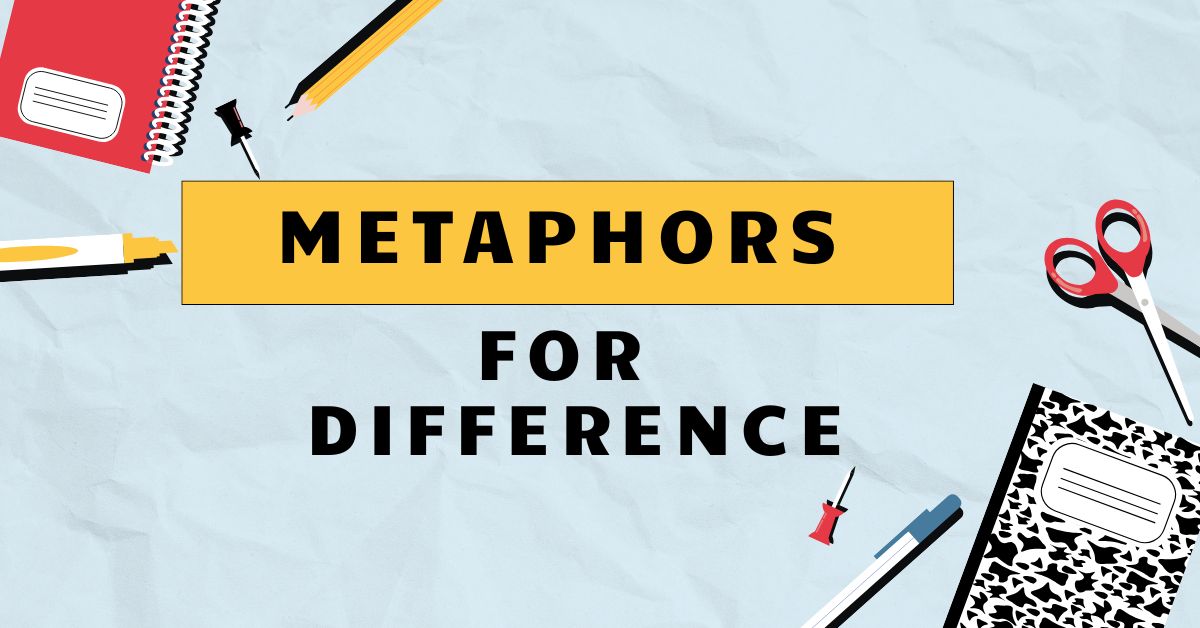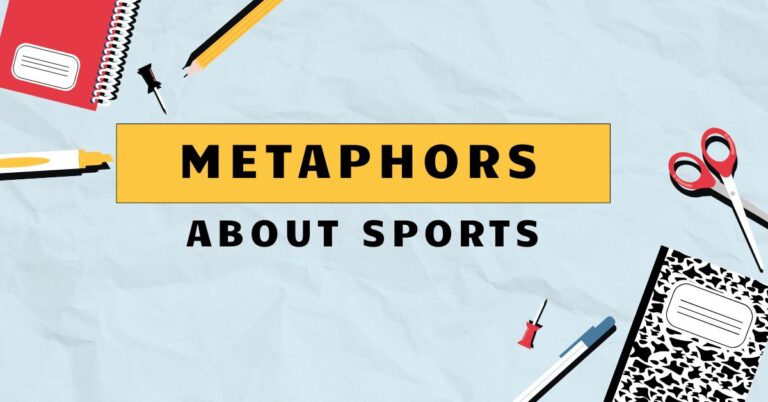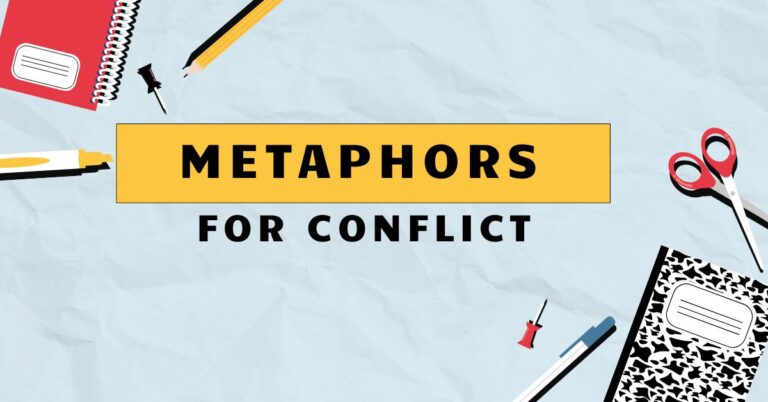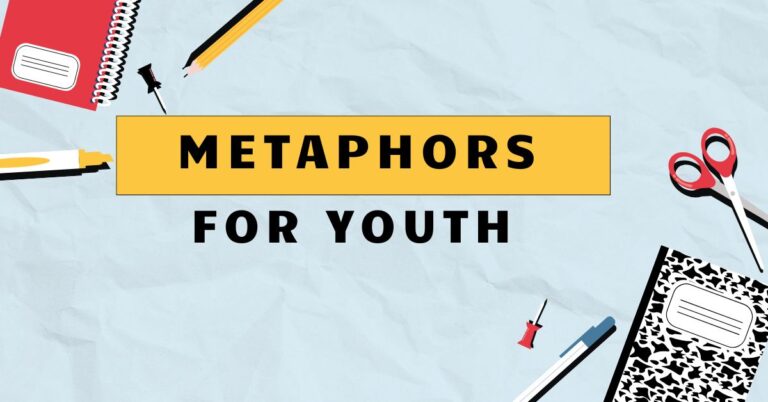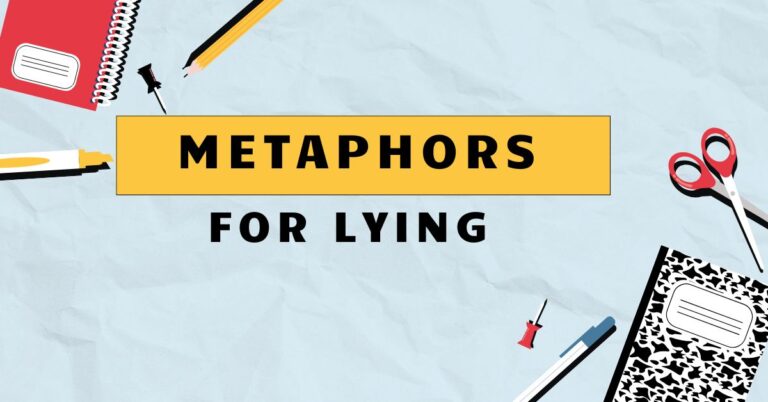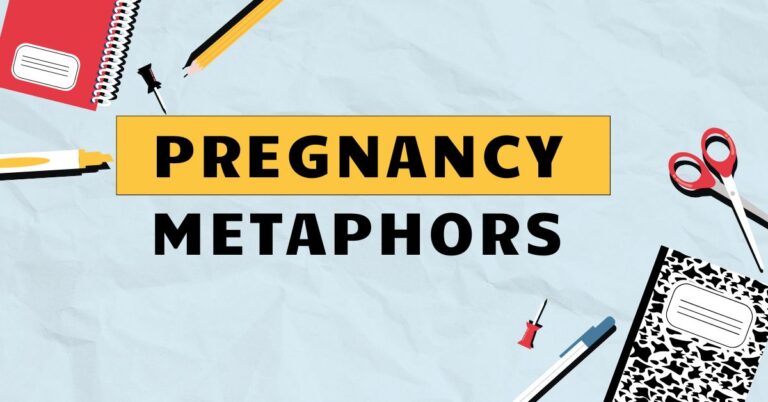40 Metaphors for Difference: Understanding & Usage in English
Metaphors are powerful tools that enrich our language, allowing us to express abstract ideas and complex relationships in vivid and relatable ways. When discussing the concept of “difference,” metaphors help us navigate the nuances of diversity, individuality, and contrast.
Mastering the use of metaphors for difference enhances both our comprehension and communication skills. This article aims to provide a comprehensive guide to understanding and using metaphors for difference effectively, benefiting students, writers, and anyone interested in refining their understanding of English grammar and figurative language.
Table of Contents
- Introduction
- Definition of Metaphors for Difference
- Structural Breakdown
- Types and Categories of Metaphors for Difference
- Examples of Metaphors for Difference
- Usage Rules
- Common Mistakes
- Practice Exercises
- Advanced Topics
- FAQ
- Conclusion
Definition of Metaphors for Difference
A metaphor is a figure of speech that directly compares two unrelated things, asserting that one thingisanother to highlight shared qualities or create a new understanding. Metaphors for difference, specifically, use this comparison to emphasize distinctions, contrasts, or variances between individuals, groups, ideas, or objects.
These metaphors often draw on concrete concepts to illuminate abstract differences, making them more accessible and relatable.
Metaphors function by transferring qualities from one domain (the source domain) to another (the target domain). In the context of difference, the source domain might involve physical characteristics, spatial arrangements, or even emotional states, while the target domain is the specific instance of difference being described.
Understanding this transfer is crucial for both interpreting and creating effective metaphors for difference.
These metaphors can be classified based on the specific type of comparison they employ. For instance, some might use spatial terms (e.g., “on different paths”), while others might rely on sensory experiences (e.g., “a stark contrast”).
The function of a metaphor for difference is typically to highlight, explain, or even critique these distinctions, often adding emotional or evaluative weight to the description.
Structural Breakdown
The structure of a metaphor for difference involves two key components: thetenorand thevehicle. The tenor is the subject to which metaphorical attributes are ascribed, and the vehicle is the object whose attributes are borrowed.
In simpler terms, the tenor is what you’re trying to describe, and the vehicle is what you’re using to describe it.
Consider the metaphor, “Their opinions were worlds apart.” Here, “their opinions” is the tenor, and “worlds apart” is the vehicle. The metaphor implies that the distance between their opinions is as vast and unbridgeable as the distance between different planets.
The effectiveness of the metaphor lies in the resonance between the vehicle and the tenor, creating a vivid image of disagreement.
The underlying structure often follows a pattern ofA is B, where A represents the tenor (the thing being described) and B represents the vehicle (the metaphorical term). Understanding this simple structure allows for a more conscious awareness of how metaphors function and how they can be constructed.
Recognizing this structure also helps in deconstructing and interpreting complex metaphorical expressions.
More complex metaphors might involve extended comparisons, where the relationship between the tenor and vehicle is explored over multiple clauses or sentences. These extended metaphors allow for a more nuanced and detailed portrayal of difference, often incorporating multiple facets of the vehicle to illuminate the tenor.
Types and Categories of Metaphors for Difference
Metaphors for difference can be categorized based on the conceptual domains they draw from. This categorization helps in understanding the different ways in which difference can be expressed and perceived.
Spatial Metaphors
Spatial metaphors use concepts of space and location to express difference. These metaphors often describe differences in terms of distance, direction, or placement.
Examples include: “They come from different worlds,” “They are on opposite sides of the fence,” and “Their views are miles apart.” These metaphors convey a sense of separation and divergence, highlighting the extent of the difference.
Light and Dark Metaphors
Light and dark metaphors associate difference with contrasting levels of illumination. Light often represents clarity, understanding, or positivity, while darkness symbolizes obscurity, confusion, or negativity.
These metaphors are often used to evaluate or judge the differences being described.
Examples include: “There’s a clear difference between the two approaches,” “His argument cast a shadow of doubt,” and “She shed light on their differing opinions.” These metaphors evoke a sense of contrast and highlight the perceived value or impact of the difference.
Journey Metaphors
Journey metaphors frame difference as a divergence in paths or trajectories. These metaphors often emphasize the process of becoming different or the consequences of following different routes.
Examples include: “They took different paths in life,” “They are headed in opposite directions,” and “Their careers diverged sharply.” These metaphors suggest a sense of movement and progression, highlighting the evolving nature of difference.
Color Metaphors
Color metaphors use different colors to represent different qualities or characteristics. Each color carries its own connotations, which are then transferred to the concept being described.
These metaphors are particularly effective in conveying emotional or aesthetic differences.
Examples include: “Their political views painted a stark contrast,” “He added a splash of color to their otherwise monochrome existence,” and “She saw the world in a different hue.” These metaphors evoke visual imagery and convey subtle nuances of difference.
Texture Metaphors
Texture metaphors use tactile sensations to describe differences. These metaphors often convey a sense of smoothness, roughness, sharpness, or softness, highlighting the sensory experience of difference.
Examples include: “Their personalities clashed like sandpaper,” “There was a rough edge to their disagreement,” and “Her approach was a smooth contrast to his abrasive style.” These metaphors create a vivid and immediate sense of the difference being described.
Examples of Metaphors for Difference
The following tables provide extensive examples of metaphors for difference, categorized by type. Each table offers a diverse range of expressions to illustrate the versatility and richness of metaphorical language.
The following table provides examples of spatial metaphors, showing how concepts of distance and position are used to describe differences.
| Metaphor | Explanation |
|---|---|
| Their opinions were worlds apart. | Their opinions were extremely different and irreconcilable. |
| They lived on opposite sides of the tracks. | They came from very different socioeconomic backgrounds. |
| They were poles apart on the issue. | Their views were completely opposed. |
| They stood at opposite ends of the spectrum. | They represented the extremes of a range of opinions. |
| Their approaches were a universe away from each other. | Their methods were entirely dissimilar. |
| They operated in different spheres. | They worked in unrelated fields or areas. |
| Their perspectives were light years apart. | Their understanding was vastly different. |
| They were on different wavelengths. | They did not understand each other well. |
| They occupied separate orbits. | They had little interaction or overlap in their lives. |
| They were in different camps. | They belonged to opposing groups or factions. |
| Their ideologies were oceans apart. | Their belief systems were fundamentally different. |
| They were at cross-purposes. | Their goals or intentions were in conflict. |
| They moved in separate circles. | They socialized with different groups of people. |
| Their experiences placed them a continent apart. | Their backgrounds were vastly different. |
| Their understanding was on another plane. | They perceived things at a different level of comprehension. |
| Their roles kept them at arm’s length. | Their positions required them to maintain distance. |
| Their destinies lay in separate directions. | Their lives were destined to take different paths. |
| Their motivations came from different planets. | Their reasons for acting were entirely dissimilar. |
| Their styles put them in separate leagues. | Their abilities were on different levels. |
| Their goals were a chasm apart. | Their objectives were fundamentally different and difficult to reconcile. |
| They were on divergent paths. | Their life choices and direction were distinct and moving away from each other. |
| Their values placed them in separate realms. | Their core beliefs and principles belonged to different spheres of thought and morality. |
| They were on opposing sides of the debate. | They held contradictory views and argued against each other. |
| Their situations kept them a gulf apart. | Their circumstances created a significant divide and lack of understanding. |
| Their attitudes were in stark opposition. | Their dispositions and approaches contrasted sharply and were fundamentally incompatible. |
The following table provides examples of light and dark metaphors, illustrating how differences can be associated with clarity, obscurity, and contrasting perspectives.
| Metaphor | Explanation |
|---|---|
| There was a clear difference between the two options. | The distinction between the options was easily discernible. |
| His explanation shed light on their differing opinions. | His explanation clarified the reasons for their disagreement. |
| Her argument cast a shadow of doubt on his claims. | Her argument raised questions and uncertainties about his statements. |
| The truth emerged from the darkness. | The reality of the situation became clear after a period of obscurity. |
| Their differences were as clear as day. | Their differences were obvious and unmistakable. |
| His silence left the issue in the dark. | His lack of communication prevented understanding and clarity. |
| Her insights illuminated the problem. | Her understanding provided clarity and a solution to the problem. |
| Their disagreement clouded the issue. | Their conflict obscured the main point and created confusion. |
| A bright contrast highlighted their different approaches. | A strong distinction emphasized their varying methods. |
| The scandal plunged the company into darkness. | The scandal brought disgrace and negativity to the company. |
| His wisdom shone a light on the path forward. | His knowledge guided them towards a clear direction. |
| Their confusion left them in the shadows. | Their lack of understanding kept them uncertain and unclear. |
| The investigation brought their secrets to light. | The inquiry revealed hidden information about them. |
| Their misconceptions kept them in the dark about the truth. | Their misunderstandings prevented them from knowing the reality. |
| Her honesty illuminated the situation. | Her truthfulness clarified the circumstances. |
| Their lies cast a dark spell over the community. | Their deceitful actions had a negative and harmful influence. |
| His guidance brightened their prospects. | His advice improved their chances of success. |
| Their ignorance shrouded the facts. | Their lack of knowledge concealed the true information. |
| The evidence brought clarity to the case. | The proof made the situation understandable and clear. |
| Their misunderstandings left them groping in the dark. | Their lack of comprehension caused them to struggle without clear direction or information. |
| Her analysis clarified the murky waters of the debate. | Her detailed examination made the complex and confusing aspects of the discussion understandable. |
| His deception cast a long shadow over their relationship. | His act of dishonesty had a lasting and detrimental effect on their connection. |
| Their insights illuminated the dark corners of the project. | Their understanding revealed hidden problems and challenges within the undertaking. |
| Their secrets remained hidden in the shadows. | Their private matters were concealed and unknown to others. |
| Their differences were thrown into sharp relief by the comparison. | The contrast between them was highlighted and made much more noticeable by placing them side by side. |
The following table provides examples of journey metaphors, showing how differences can be described in terms of paths, directions, and progress.
| Metaphor | Explanation |
|---|---|
| They took different paths in life. | They made different choices and pursued different goals. |
| Their careers diverged sharply after graduation. | Their professional lives took very different directions. |
| They were headed in opposite directions. | Their goals and intentions were in conflict. |
| Their relationship went down different roads. | Their connection evolved in separate and distinct ways. |
| They were on parallel tracks but never met. | Their lives followed similar paths but without intersection. |
| Their ideologies followed winding routes to different conclusions. | Their belief systems took complex paths leading to varying outcomes. |
| Their ambitions set them on separate journeys. | Their aspirations motivated them to pursue independent endeavors. |
| They strayed from the common path. | They deviated from the expected or conventional course. |
| Their lives followed divergent courses. | Their experiences and choices led them in different directions. |
| They embarked on different adventures. | They began distinct and exciting experiences. |
| Their perspectives had traveled different roads. | Their viewpoints were shaped by varying experiences. |
| They set sail on separate voyages. | They began independent and significant undertakings. |
| Their destinies charted different routes. | Their futures were mapped out in distinct ways. |
| They navigated different waters. | They dealt with varying challenges and circumstances. |
| Their dreams led them down different alleys. | Their aspirations guided them along separate paths. |
| They advanced along different avenues. | They progressed using distinct strategies and methods. |
| Their ambitions propelled them on separate trajectories. | Their aspirations drove them along different courses. |
| They wandered down different lanes. | They drifted along separate and casual paths. |
| Their careers branched off in different directions. | Their professional lives developed along separate lines. |
| They were on a collision course due to their differing approaches. | Their conflicting methods were likely to lead to confrontation or failure. |
| Their initiatives followed parallel lines but never converged. | Their projects developed similarly but never came together or overlapped. |
| Their paths meandered in opposite directions after the conflict. | Their lives unfolded separately, moving away from each other following the disagreement. |
| Their journeys took them to different destinations both geographically and emotionally. | Their experiences led them to distinct places and states of mind. |
| Their lifestyles veered onto separate highways of existence. | Their ways of living diverged dramatically, creating distinct and independent lives. |
| Their goals were on a fast track to divergence, leading them further apart. | Their objectives were rapidly evolving in separate directions, increasing the distance between them. |
Usage Rules
When using metaphors for difference, it’s essential to consider several rules to ensure clarity and effectiveness. First, the metaphor should beappropriateto the context and audience.
A metaphor that is too obscure or culturally specific may not be understood by everyone.
Second, the metaphor should beconsistent. Avoid mixing metaphors within the same sentence or paragraph, as this can create confusion and weaken the impact.
For example, avoid saying something like “Their ideas were worlds apart, but they were also on the same page.”
Third, the metaphor should bevivid and engaging. Choose metaphors that evoke strong imagery and resonate with the reader’s experiences.
A cliché or overused metaphor will lack impact and may even detract from the message.
Fourth, be mindful of theconnotationsof the vehicle. The chosen vehicle should align with the intended meaning and avoid unintended implications.
For example, using a negative vehicle to describe a difference might inadvertently convey a judgmental tone.
Finally, ensure that the relationship between the tenor and the vehicle is clear and logical. The connection should be readily apparent to the reader, allowing them to easily understand the intended comparison.
Common Mistakes
One common mistake is using mixed metaphors, which occur when two or more inconsistent metaphors are combined. This can create a confusing and nonsensical image.
Incorrect: “They were sailing in the same boat, but their ideas were worlds apart.”
Correct: “They were on the same team, but their ideas were worlds apart.”
Another mistake is using clichéd metaphors, which are overused and lack impact. These metaphors have lost their originality and fail to engage the reader.
Incorrect: “Their differences were like night and day.”
Correct: “Their differences were as stark as a black and white photograph.”
Using metaphors that are too obscure or complex is also a common error. The metaphor should be accessible to the target audience and easily understood.
Incorrect: “Their perspectives were as orthogonal as Klein bottles.”
Correct: “Their perspectives were fundamentally different and irreconcilable.”
Finally, failing to consider the connotations of the vehicle can lead to unintended meanings or misinterpretations.
Incorrect: “He was a snake in the grass, differing from his honest colleagues.” (This implies dishonesty rather than just difference.)
Correct: “He was a lone wolf, differing from his collaborative colleagues.” (This implies independence rather than negative traits.)
Practice Exercises
Complete the following exercises to test your understanding of metaphors for difference. Identify the metaphor used in each sentence and explain its meaning.
Then, rewrite the sentence using a different metaphor to convey a similar meaning.
| Question | Answer |
|---|---|
| 1. Their personalities clashed like cymbals. | Metaphor: Clashed like cymbals. Meaning: Their personalities were incompatible and created conflict. Alternative: Their personalities were like oil and water. |
| 2. They were on different wavelengths. | Metaphor: Different wavelengths. Meaning: They did not understand each other well. Alternative: They spoke different languages. |
| 3. Her views shed light on the issue. | Metaphor: Shed light. Meaning: Her views clarified the issue. Alternative: Her views illuminated the problem. |
| 4. Their approaches were miles apart. | Metaphor: Miles apart. Meaning: Their approaches were very different. Alternative: Their approaches were a universe away. |
| 5. He added a splash of color to their monochrome existence. | Metaphor: Splash of color. Meaning: He brought vibrancy and excitement to their dull lives. Alternative: He brought a spark to their otherwise dreary lives. |
| 6. Their opinions were poles apart. | Metaphor: Poles apart. Meaning: Their opinions were completely opposite. Alternative: Their opinions were at opposite ends of the spectrum. |
| 7. They took different paths in life. | Metaphor: Different paths. Meaning: They made different choices and pursued different goals. Alternative: They embarked on separate journeys. |
| 8. Their differences were as clear as day. | Metaphor: Clear as day. Meaning: Their differences were obvious and unmistakable. Alternative: Their differences stood out like a sore thumb. |
| 9. Her argument cast a shadow of doubt. | Metaphor: Cast a shadow. Meaning: Her argument raised questions and uncertainties. Alternative: Her argument threw a wrench in the works. |
| 10. They were in different camps. | Metaphor: Different camps. Meaning: They belonged to opposing groups or factions. Alternative: They were on opposite sides of the fence. |
Exercise 2: Create your own metaphors for difference.
Complete the following sentences using a metaphor for difference. Be creative and choose metaphors that effectively convey the intended meaning.
- Their leadership styles were so different; his was a __________, while hers was a __________.
- The two companies approached the market with strategies that were __________.
- While one sister was always calm and collected, the other was __________.
- Their musical tastes were so varied; his playlist was __________, while hers was __________.
- The debate highlighted the fact that their political ideologies were __________.
Suggested Answers:
- Their leadership styles were so different; his was a commanding general, while hers was a collaborative conductor.
- The two companies approached the market with strategies that were diametrically opposed.
- While one sister was always calm and collected, the other was a whirlwind of energy.
- Their musical tastes were so varied; his playlist was a classical symphony, while hers was a punk rock anthem.
- The debate highlighted the fact that their political ideologies were at opposite ends of the spectrum.
Advanced Topics
At an advanced level, understanding the cultural and historical contexts of metaphors for difference becomes crucial. Metaphors are not universal; their meanings and connotations can vary significantly across cultures and time periods.
For example, colors can have different symbolic meanings in different cultures, influencing the interpretation of color metaphors.
Exploring the use of metaphors in political discourse is another advanced topic. Politicians often use metaphors to frame issues, persuade voters, and create divisions.
Analyzing these metaphors can reveal underlying ideologies and power dynamics.
Deconstructing and critiquing dominant metaphors is also an important skill. Identifying the assumptions and biases embedded in common metaphors can help challenge prevailing narratives and promote more inclusive and nuanced understandings of difference.
Finally, experimenting with novel and unconventional metaphors can push the boundaries of language and create new ways of perceiving and expressing difference. This involves a deep understanding of metaphorical principles and a willingness to take creative risks.
FAQ
- What is the difference between a metaphor and a simile?
A metaphor directly equates two unlike things (e.g., “He is a lion”), while a simile uses “like” or “as” to make a comparison (e.g., “He is like a lion”). Metaphors are more assertive and create a stronger connection between the two things being compared.
- How can I improve my ability to understand metaphors?
Read widely and pay attention to how authors and speakers use figurative language. Practice identifying the tenor and vehicle in metaphors, and consider the underlying connections between them. Also, explore different cultural and historical contexts to understand how metaphors can vary in meaning.
- Are some metaphors better than others?
The effectiveness of a metaphor depends on its appropriateness, clarity, and originality. A good metaphor should be relevant to the context, easily understood by the audience, and engaging. Clichéd or mixed metaphors should be avoided.
- How can I avoid using clichéd metaphors?
Be creative and try to find fresh and original ways to express your ideas. Think about the specific qualities you want to emphasize and brainstorm different images or concepts that could effectively convey those qualities. Avoid using overused phrases and try to create your own unique comparisons.
- Can a metaphor be interpreted in multiple ways?
Yes, metaphors can be open to interpretation, especially if they are complex or ambiguous. The intended meaning should be clear from the context, but readers may still bring their own experiences and perspectives to the interpretation. This can enrich the meaning of the metaphor but also lead to misunderstandings if not carefully crafted.
- How do cultural differences affect the interpretation of metaphors?
Metaphors are often rooted in cultural experiences and beliefs, so their meanings can vary significantly across cultures. A metaphor that is easily understood in one culture may be confusing or even offensive in another. It’s important to be aware of these cultural differences when using or interpreting metaphors, especially in cross-cultural communication.
- What is an extended metaphor?
An extended metaphor is a metaphor that is developed over several lines or sentences. It involves a more detailed and elaborate comparison between the tenor and the vehicle, exploring multiple facets of their relationship. Extended metaphors can be very powerful in creating a vivid and memorable image.
- Why are metaphors important in communication?
Metaphors enhance communication by making abstract ideas more concrete and relatable. They can also add emotional impact and create a deeper connection with the audience. By using metaphors effectively, speakers and writers can make their message more persuasive and memorable.
- Can metaphors be used in all types of writing?
Metaphors can be used in various types of writing, including literature, journalism, and academic writing. However, the appropriateness of using metaphors depends on the specific context and audience. In formal or technical writing, metaphors should be used sparingly and with caution to avoid ambiguity or misinterpretation.
- How do I know if a metaphor is effective?
An effective metaphor should resonate with the audience, create a clear and vivid image, and enhance the meaning of the message. You can test the effectiveness of a metaphor by asking others for their feedback or by considering how it contributes to the overall impact of your writing or speech.
Conclusion
Understanding and effectively using metaphors for difference is a valuable skill that enhances both communication and comprehension. By mastering the principles of metaphorical language, you can express complex ideas with greater clarity and impact.
Remember to consider the context, audience, and connotations of your metaphors to ensure they are appropriate and effective.
Practice identifying and analyzing metaphors in various texts and speeches to deepen your understanding. Experiment with creating your own metaphors to develop your creative writing skills.
By continually refining your metaphorical abilities, you can become a more articulate and persuasive communicator.
Ultimately, the ability to use metaphors for difference allows us to see the world in new and insightful ways, fostering a deeper appreciation for the richness and diversity of human experience. Continue to explore the power of figurative language and unlock its potential to transform your communication.

